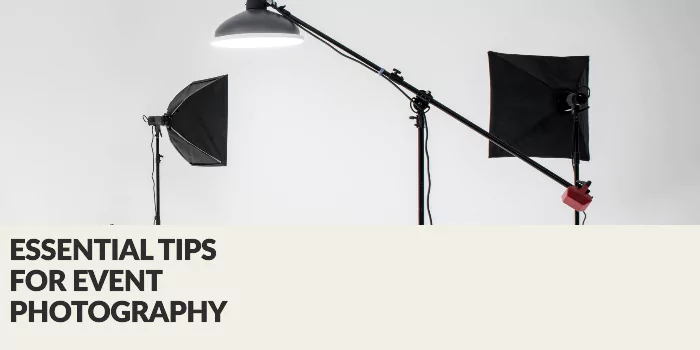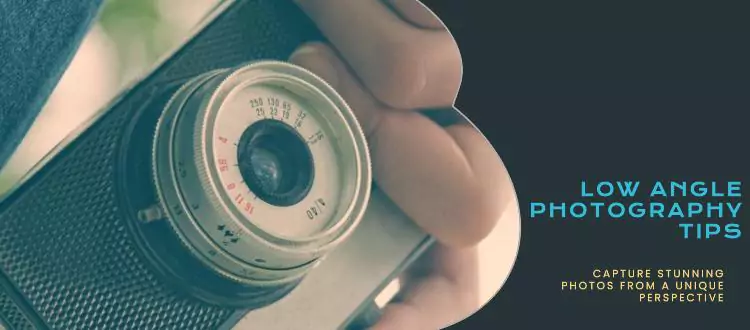Theodore Lowe, Ap #867-859
Sit Rd, Azusa New York
Find us here
Essential Tips for Event Photography

Engaging in event photography requires more than just a good camera; it's about capturing the essence of the moment, the emotion of the crowd, and the key highlights that define the occasion. To excel, photographers must hone their skills to snap crisp, compelling images that tell the story of the event.
Whether it's a corporate function, a family celebration, or a music festival, understanding the flow of the event and being ready at the right time and place are crucial. With these insights, photographers can produce a vivid album that brings the event's memories to life for clients. Good event photography freezes moments in time, enabling people to relive and treasure them forever.
Unlocking the Power of Preparation
An exceptional event photography experience begins long before the camera shutter clicks. Preparation is the secret ingredient to capturing those priceless moments and dynamic shots. Laying the groundwork ensures you are equipped to handle every aspect of the event, from lighting quirks to unexpected photo opportunities.
Scouting the Venue in Advance
Scouting the Venue in Advance
Visiting the venue beforehand gives photographers the upper hand. Explore all angles, identify perfect spots for shots, and understand the lighting situations. Here's what to consider:
- Natural light sources: Track the sun's movement for outdoor venues.
- Artificial lighting: Note the placement and intensity indoors.
- Background elements: Look for potential distractions or enhancements.
Table layouts, decorations, and stages are essential details that help in visualizing the event day photographs.
Getting to Know the Event Schedule
Getting To Know the Event Schedule
Familiarity with the event timeline is crucial. Sync your plan with the scheduled activities to capture every important moment. Aligning your shots with the day's flow ensures you won't miss a thing. Consider these steps:
- Pinpoint key moments such as speeches, toasts, and performances.
- Set reminders for transitions between different parts of the event.
- Coordinate with organizers for any special requests or surprises.
Armed with this knowledge, you'll capture the event's narrative with ease and confidence.
Gear Essentials for Capturing the Moment
Imagine stepping into an event, camera in hand, ready to capture memories that will last a lifetime. The right gear is crucial for event photography. It allows photographers to freeze moments in time with clarity and creativity. Let's delve into the key pieces of equipment needed to make every shot count.
Selecting the Right Camera and Lenses
Choosing the perfect camera and lenses sets the foundation for exceptional event photography. Consider a camera's sensor size, megapixel count, and shooting speed. Look for a versatile lens range that captures wide scenes and intimate portraits.
- Full-frame cameras: They offer better low-light performance and larger field of view.
- Fast shutter speeds: Essential for freezing action without blur.
- Multiple lenses: A wide-angle lens for landscapes and a telephoto lens for close-ups provide range.
Must-have Accessories for Flexibility
With the right accessories, photographers can adapt to any event's demands. Accessories enhance camera performance and help manage unforeseen challenges.
|
Accessory |
Function |
|
Extra Batteries |
Ensure uninterrupted shooting. |
|
Memory Cards |
Provide ample storage for high-resolution images. |
|
External Flash |
Offer control over lighting. |
|
Reflectors |
Help manipulate natural light. |
|
Tripod |
Stabilize shots in various environments. |
Mastering the Art of Composition
Mastering the Art of Composition in event photography transforms simple snapshots into captivating images. It's all about placing visual elements harmoniously. Great composition tells a story and guides the viewer's eye through the scene. With a few key techniques, photographers can create balance, interest, and emotional impact. Let's dive into two crucial techniques for elevating your event photography.
Framing Shots with Purpose
Framing is not just about capturing moments; it's about doing so with intent. To frame shots with purpose, consider the following:
- Highlight the subject by positioning them within natural frames like doorways.
- Use the rule of thirds to create dynamic images.
- Balanced elements make photos pleasing to the eye.
Think of your viewfinder as a canvas where every part matters. A purposeful frame leads the viewer to the photo's focal point.
Utilizing Angles and Perspectives
Exploring various angles and perspectives adds depth and interest. Follow these tips:
- Climb high for a bird's-eye view or go low for a unique perspective.
- Experiment with different lenses to alter your viewpoint.
- Capture emotions up-close for impact through a tight framing.
Angles and perspectives give photos context. They invite viewers into the scene. Remember, your perspective as a photographer can turn a simple photo into a story.
Navigating the Challenges of Lighting
Mastering the art of lighting is the key to capturing stunning event photos. Whether you're indoors with mixed light sources or outdoors battling the elements, each setting presents unique obstacles. Armed with the right techniques, you can turn these challenges into opportunities for breathtaking imagery. Let's explore how to adapt to different lighting conditions and create visually compelling stories.
Adapting To Indoor and Outdoor Settings
Lighting can make or break an event photo. Indoor events often have less natural light, requiring a creative approach. On the flip side, outdoor settings provide ample sunlight but pose problems like harsh shadows or unpredictable weather. It's crucial to anticipate these scenarios and prepare accordingly.
- Scout the location ahead of time to identify light sources.
- Carry a variety of lenses suitable for different lighting situations.
- Use reflectors to bounce light and soften shadows.
- Select the right ISO, aperture, and shutter speed for the environment.
Harnessing Natural Light and Flash
Maximizing natural light creates photos that are lively and true to color. However, natural light isn’t always enough. Knowing when and how to use flash is also important.
|
Condition |
Natural Light |
Flash |
|
Softly Lit Indoors |
Use windows to enhance ambient light. |
Diffuse the flash to avoid harshness. |
|
Bright Outdoors |
Seek shade to even out harsh sunlight. |
Apply fill flash to illuminate shadows. |
|
Overcast |
Exploit the soft, diffused light. |
Bounce flash for a subtle fill. |
Mastering these tools and techniques will ensure your event photography stands out, no matter the lighting challenges. Remember to always keep an eye on the lighting, and practice makes perfect!
Capturing the Essence of the Event
Welcome to the heart of your event - where every smile, every cheer, and every significant moment makes the memory unforgettable. When we talk about event photography, it's not just about snapping pictures. It's about weaving a story through the lens, making the intangible atmosphere of laughter, applause, and shared experiences come alive. In this section, we share insider tips on how to encapsulate the spirit of any event.
Focusing On Candid Moments
Candid moments are the raw emotions of an event captured stealthily. These are the laughter shared between friends, the tears during a speech, or the excitement of a surprise. To catch these moments:
- Always stay alert with your camera ready.
- Blend in with guests to snap natural interactions.
- Use a zoom lens to photograph from a distance unnoticed.
These tips help freeze genuine emotions in time, offering a glimpse into the event's heart.
Highlighting Key Speakers and Performances
Events often revolve around key speakers and performances that are the main attractions. Highlighting these personalities is crucial. To do this effectively:
- Prepare by researching speakers and performers.
- Take multiple shots to capture their dynamism.
- Use appropriate lighting to illuminate the stage.
Spotlighting these pivotal moments ensures that the event's highlights are not missed and are beautifully preserved.
Post-event Workflow Strategies
Post-event workflow strategies play a crucial role in event photography. They ensure that the hard work put into capturing moments doesn't get overshadowed by the daunting task of photo management. Efficiently managing and editing photos, alongside delivering captivating images to clients, are pillars of a successful post-event workflow.
Efficiently Managing and Editing Photos
Organization is the key to managing thousands of event photos. Start by creating a consistent file naming system and categorizing images into folders.
- Sort photos by event segments.
- Use software with batch processing capabilities.
- Prioritize highlights for quick delivery.
Editing can be overwhelming, but with the right techniques, you can streamline the process.
- Apply presets or batch edits for a uniform look.
- Adjust exposure, contrast, and color corrections with care.
- Select the top-tier images for detailed editing.
Delivering Captivating Images to Clients
Delivering photos means more than just handing over files. It's about creating an experience for your clients.
|
Step |
Action |
Outcome |
|
1 |
Choose the best platform for delivery |
Easy access for clients |
|
2 |
Offer personalized galleries |
A bespoke viewing experience |
|
3 |
Provide diverse formats |
Ready-to-use images |
Communicate clearly about timelines for delivery. Offer a sneak peek to build excitement.
Conclusion
Capturing remarkable moments at events requires skill and finesse. Remember, a successful event photographer blends technical prowess with creativity. By following the tips discussed, you'll enhance your portfolio and impress clients. Keep practicing, stay prepared, and watch your event photography thrive.
Related blog posts
Low Angle Photography Tips
For stunning low angle photography, get close to the ground and use a wide lens. Experiment with perspectives to add a sense of grandeur or power to your subject.


